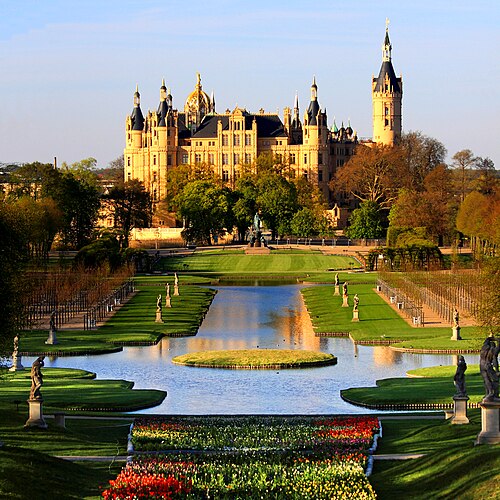Monarchy of Unified Sera
This article is incomplete because it is pending further input from participants, or it is a work-in-progress by one author. Please comment on this article's talk page to share your input, comments and questions. Note: To contribute to this article, you may need to seek help from the author(s) of this page. |
| King/Queen of the United States of Sera | |
|---|---|
 | |
| Incumbent | |
 | |
| Skolas Tu'Aruc since September 22nd, 2022 | |
| Details | |
| Style | His Majesty |
| Heir apparent | Jabori Tu'Aruc |
| First monarch | King Kwame Tu'Aruc |
| Formation | 1741 |
| Residence | Palace of the Kings |
The Monarchy of Unified Sera, commonly referred to as the Seran monarchy, or Office of the Monarchy is the constitutional form of government by which a hereditary sovereign reigns as the head of state of the United States of Sera, its territories, and possessions that are classified under international law as belonging to the country. Instead of operating under a system of primogeniture, ultimogeniture, seniority or gavelkind, the prospective heirs to the throne are required by law to compete for the throne by showing their mental, emotional, physical, and moral fitness. Further, heirs are required to receive the backing of an established, authorized political party to be considered for the trials. The current monarch is King Skolas Keegar Tu'Aruc, who ascended the throne on September 22nd, 2022, upon the death of his father, King Sefu Tu'Aruc and defeating his siblings during the trials.
The monarch and their immediate family undertake various official, ceremonial, diplomatic and representational duties. Unlike other similar forms of government however, the royal family only receives these duties if they are considered fit for them and earn their place. As the monarchy is constitutional, the monarch is limited to functions such as bestowing honors and ceremonially appointing the prime minister (the Prime Minister is selected through ranked national voting with the monarch simply "swearing" the Prime Minister into office), which are performed in a non-partisan manner. The sovereign is also able to lobby and support bills within the Chamber of Deputies, and in certain cases, pass Royal Decrees that unilaterally affect the legal system that can only be overturned by an act of Parliament or in extreme cases, the High Tribunal. The monarch is also Head of the Valkiri Royal Guard, whereas the Prime Minister is head of the Seran Armed Forces.
The Monarch, as head of the Royal Guard, has unilateral authority to deploy the guard in places identified as having a humanitarian crisis or states in active conflict with the country without approval from the SAF, Executive Office, Military Marshals, or Parliament. Despite this, a long-standing tradition within the Monarchy has been to consult with these entities before deploying the Guard. Unlike in other constitutional monarchies where the ultimate executive authority over the government is formally by and through the royal prerogative, in Unified Sera the authority of the government to function and operate come directly from the founding documents of the nation known as the Articles of Federation.
The Seran monarchy traces its origins from the petty kingdoms and tribes of post-colonial Sera, which consolidated into the Union of Seran Tribes by the 14th century. However, the ineffectual nature of the union in the face of foreign aggression and expansionism, coupled with constant and persistent attacks on the frontier by hostile tribals that did not come under the banner of Quadrumvirate rule within the Union necessitated more dramatic measures. As such, the chieftains and kings of the Quadrumvirate penned an agreement that upon their deaths, power within the nation will transfer into a single powerful ruler; effectively pivoting the country from council rulership to an absolute monarchy.
To ensure their tribes and kingdoms followed the will of the Quadrumvirate after their deaths and to show the unity of the nation, the Sakhile Kingdom and Mbaku Tribe selected Kwame Turae to serve as king (the son of a Kogan chieftain), and Carlotta Arucus (the daughter of a prominent Latinius priestess and King) to be Queen. Their union was further solidified by the unification of their names to symbolize the unification of the country. Thus, the Tu'Aruc royal dynasty was born. The process was completed in the 18th century when the last of the Quadrumvirate rulers died of natural causes.
A few years into absolute monarchy, the young King and Queen found themselves faced with the difficult prospect of trying to consolidate their hold over the nation. A delicate game of intrigue and power began to stir, as the monarchs were forced to either acquiesce to demands from nobility and the aristocracy, or dig in depending on the situation. For a time this arrangement worked, but strain began to threaten the fragile nation as war erupted. With the outbreak of war, the nobility saw opportunity and leveraged their support in exchange for concessions. With no other option, the monarchy agreed to these concessions that limited the powers of the monarchy. The nation, after making adjustments to the original founding documents, became a constitutional monarchy.
| This article is part of a series on the |
| History of the United States of Sera |
|---|
 |



